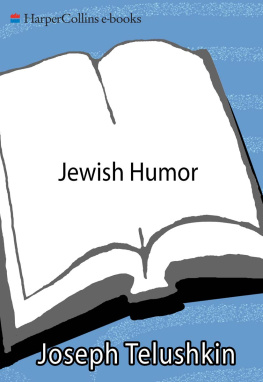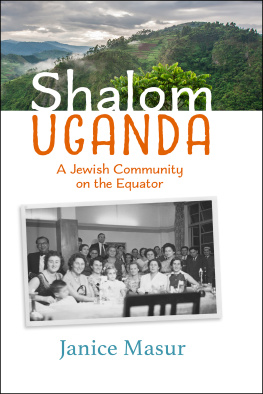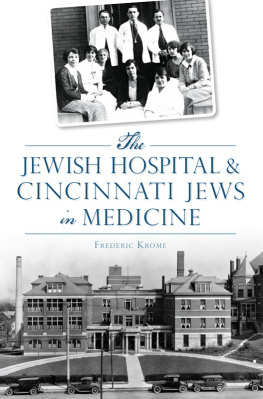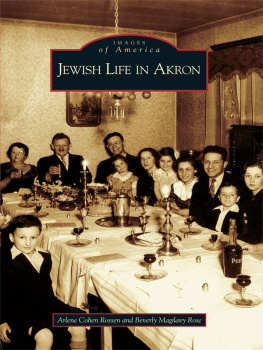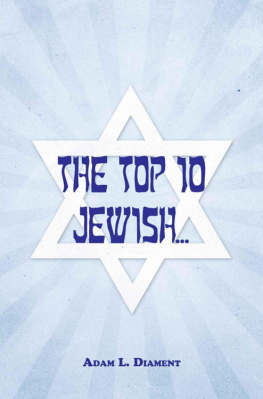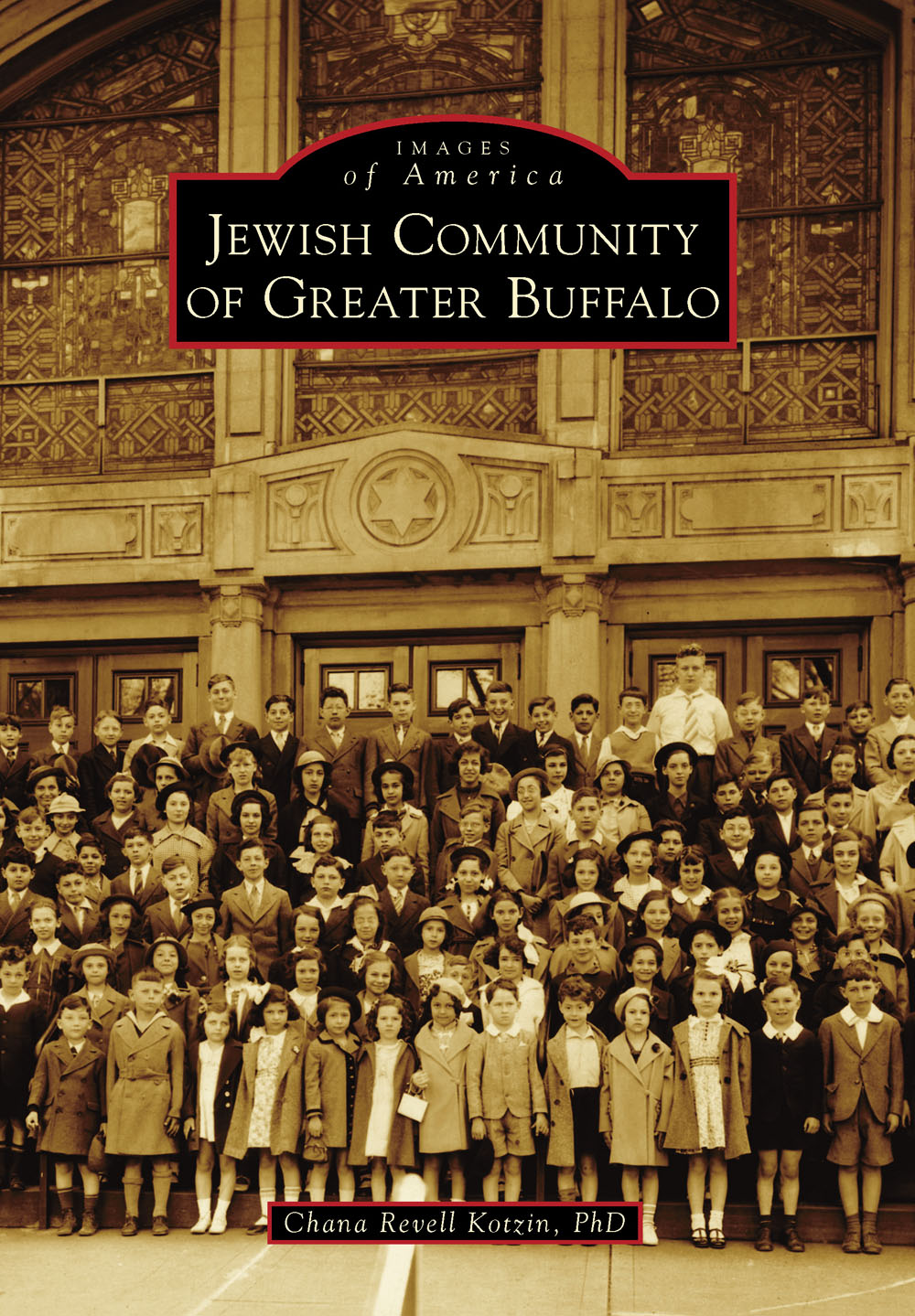
IMAGES
of America
JEWISH COMMUNITY OF
GREATER BUFFALO
ON THE COVER: Taken by Buffalo photographer Hauser Bob, this image is of the primary and junior departments of the religious school of Temple Beth El, Buffalo, New York. At the time of this photograph in 1936, Temple Beth El was located at 155 Richmond Avenue. (Courtesy of Temple Beth El, Buffalo Collection, University Archives.)
IMAGES
of America
JEWISH COMMUNITY OF
GREATER BUFFALO
Chana Revell Kotzin, PhD

Copyright 2013 by Chana Revell Kotzin, PhD
ISBN 978-1-4671-2006-7
Ebook ISBN 9781439643891
Published by Arcadia Publishing
Charleston, South Carolina
Library of Congress Control Number: 2013931053
For all general information, please contact Arcadia Publishing:
Telephone 843-853-2070
Fax 843-853-0044
E-mail
For customer service and orders:
Toll-Free 1-888-313-2665
Visit us on the Internet at www.arcadiapublishing.com
For my dearest son, Noah, who is a source of joy and wonder every day, and for my wonderful husband, Daniel, for his unending love and support.
CONTENTS
ACKNOWLEDGMENTS
The Jewish Buffalo Archives Project is a Jewish community-university partnership with the University Archives, State University of New York at Buffalo, under the auspices of the Bureau of Jewish Education and the Foundation for Jewish Philanthropies. Since its inception, much of the work of the Jewish Buffalo Archives Project has been supported by the generosity of funders through the Foundation for Jewish Philanthropies. Foundation funding continues with this book, which grows out of another initiative previously aided by the Foundation, the digital Jewish Buffalo Image Collection.
Partnership with the University Archives, State University of New York at Buffalo has been critical to the support and access of our collections. John Edens and Nancy Nuzzo both proved central to this relationship, and their generous help is greatly appreciated. Senior staff assistant William Offhaus at the University Archives was extremely helpful with completing extra scans. Mark Criden generously loaned materials from the Cofeld Judaic Museum. Readers Daniel Kotzin, David Gerber, Evie Weinstein, Robin Macks, and Bette Davidson made valuable comments. Rita Goldman, Ethel Melzer, Mindy Ponivas, and Jill Ginsburg at the Bureau of Jewish Education provided ongoing support. Peter Fleischmann invested significant time to look at hundreds of images. Ellen Goldstein and Jordana Halpern found additional images. Robert Deull, Rabbi Drorah Setel, Allan Werbow, Janet Gunner, Joanne Rekoon, Rabbi Alex Lazarus-Klein, and Rabbi Moshe Taub helped with their synagogue records. Dr. Douglas DeCroix, Matthew Biddle, Daniel Dilandro, Cynthia Van Ness, and Linda Reinumagi supplied essential images. Rita Weiss published our fruitful call for photographs. Don Dannecker took beautiful photographs. Kathryn McKinney maintained administrative files for each photograph and scanned numerous others, along with typing notes. Rmy Thurston and Jim Kempert at Arcadia Publishing were helpful throughout. Noah and Daniel Kotzin have been a constant support. Lastly, numerous organizations and families donated their collections for the benefit of the community and have given us all a gift in perpetuity that enables our greater understanding of Jewish history in Buffalo and Niagara Falls. Individuals who came forward to loan their photographs for this particular publication added special touches, and each has my thanks, alongside being individually identified in captions. All royalties of the author are donated to the Foundation for Jewish Philanthropies for the benefit of the Jewish Buffalo Archives Project.
INTRODUCTION
This rich pictorial history begins with Buffalos first synagogue and traces the development of an increasingly complex and diverse Jewish community over more than 150 years. Many of the photographs were obtained from the Jewish Community Archives at the University at Buffalo, which are identified by collection title and University Archives. These are augmented by an array of community contributions.
Temple Beth El, founded in 1847 as the first Buffalo synagogue, was later joined by another orthodox synagogue, Temple Beth Zion, in 1850, which, by 1863, allied with the Reform movement. The Buffalo Jewish community was small before 1880, numbering around 1,000 with just three synagogues by 1875, and was settled for the most part around Main Street within the commercial heart of Buffalo.
Most Jews in Buffalo prior to 1880 traced their ancestry to German and Lithuanian origins. The broad German culture in Buffalo at the time was familiar and attractive to Jewish immigrants. Jewish men formed lodges, such as the Bnai Brith Montefiore Lodge, but also participated in German music clubs as well as social clubs and other institutions. Having reached a certain level of economic attainment, Jewish men took part in broader community organizations as well; one example is Abraham Altman, a well-known banker who eventually became president of the Buffalo Club. German Jewish women created their own separate structures too, including sisterhoods and sewing circles, as well as participating in Buffalo cultural and social organizations such as the Charity Organization Society.
Violently antisemitic attacks as well as severe economic distress in Eastern Europe radically transformed the fabric of Buffalo Jewry from 1881 to 1924, as Jewish immigrants sought haven. Jewish women, many of whom were associated with Temple Beth Zion, founded many of the initial programs to aid refugees, eventually building Zion House at 456 Jefferson Avenue. This settlement house offered supplementary religious school education for children and English classes to new immigrants. It was also home to service agencies, including the forerunner to the present-day Jewish Family Service and the Jewish Federation. In 1914, social and educational programming relocated to the newly built Jewish Community Building (JCB). At 406 Jefferson Avenue, the JCB became the secular center of the William Street community.
As needs for services grew, amalgamating the existing aid groups to prevent duplication and allow coordination of fundraising and services, the Federated Jewish Charities of Buffalo was created in 1903, the forerunner to todays Jewish Federation of Greater Buffalo. Even with this union, many needs could not be addressed by funds collected by the Federated Jewish Charities alone. Self-help within the East Side became a critical transformational tool that Eastern European Jews employed themselves, creating landsmanshaftn (a hometown society of immigrants from the same European town or region) and mutual aid organizations.
New generations of Jews in East Buffalo acculturated through educational opportunities provided by the public school system, and in increasing numbers progressed through higher education. For Jews who had come of age, or who were born and raised in East Buffalo, their identification as American Jews was stronger than their landsleute identities, which continued to comfort and anchor their parents. Younger Jews were looking beyond the confines of the William Street area; in the 1920s, they would begin the movement into the north part of the city and the West Side. War service from 1917 and the experience of America at war cemented American Jewish identities for young community members.
In 1924, the numbers of new immigrants into Buffalo and across American cities dropped precipitously following immigration legislation. Thereafter, the need for Americanization services and settlement-type services reduced, and health, cultural, and educational services for the next generation emerged, alongside services for the elderly. Social and welfare needs did not disappear but they did change. For just as the new generations of Jews in East Buffalo were moving into the middle class, joining Buffalo Jews from the earlier settled community who had already arrived there, the worldwide economic disaster that began with the stock market crash in 1929 put many dreams on hold, both in the city and beyond.
Next page



